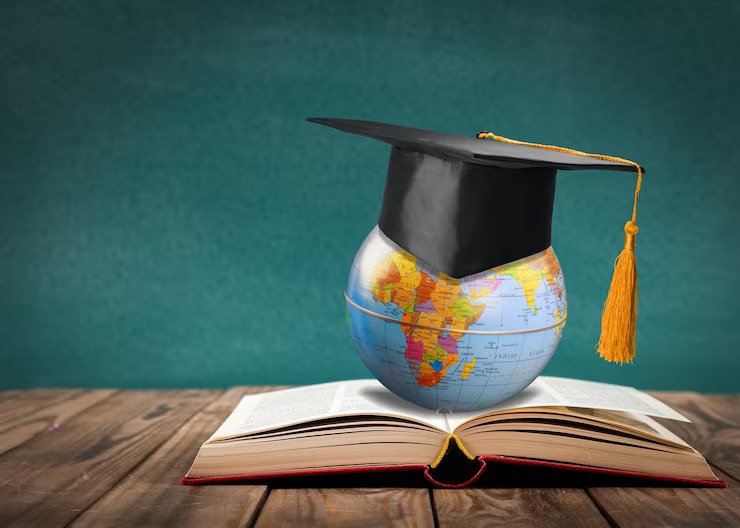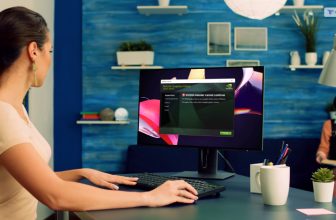
The education system is constantly evolving in the 21st century.
Gone are the days when a school day was spent sitting at cramped desks memorizing dates and equations; now schools have opened their classrooms up to the increasingly exciting possibility of integrating technology into lessons, reshaping what it means to learn.
In this blog post, we’ll take an exhilarating journey through current trends and innovations within education today – from virtual reality learning experiences that can make literature come alive to flexible online courses catering specifically to individual goals. What’s the value of these new approaches? How do they affect students and educators alike? Let’s find out together!
The Digitalization of Education
The increasing presence of technology in our everyday lives has eventually led to its significant involvement in education. Digitalization has made it possible to personalize learning experiences and cater to the needs of individual students. Online learning platforms and virtual classrooms have opened up access to education for learners worldwide, regardless of geographical location or economic status.
Personalized Learning
In recent years, many educators have been adopting personalized learning as they realize that a single approach to education doesn’t work for everyone. Using data and analytics, teachers can pinpoint the strengths and weaknesses of each student and create customized learning plans to meet their individual needs.
Gamification
Gamification is another trend that has been gaining momentum in education. By incorporating game mechanics into the learning process, educators can make education more engaging and interactive. Gamification can also help to motivate students and encourage them to take an active role in their learning.
Artificial Intelligence
Artificial intelligence (AI) is poised to revolutionize the education sector by automating administrative tasks, providing personalized learning experiences, and improving student outcomes. AI-powered tools can analyze data from student assessments and provide teachers with insights into each student’s learning progress, allowing them to adjust their teaching strategies accordingly.
Virtual Reality
Virtual reality is ready to revolutionize the way we teach, enabling students with amazing opportunities for exploration and education. Through this innovative technology, educators can now transport learners into virtual learning atmospheres where they are able to gain insights through immersive experiences that truly bring concepts alive!
Augmented Reality
Augmented reality (AR) is a fascinating technology that enhances how students learn, particularly in the context of custom augmented reality. It shares some similarities with virtual reality, yet the experience it provides is entirely unique. AR lies at the intersection of real and digital worlds–it displays digital content onto everyday objects whilst keeping users epistemically tethered to the tangible world around them.
Consequently, it has become an attractive addition to classrooms all over the world. Rather than staying entirely entrenched in a virtual environment, students get to benefit from interactive, hands-on learning experiences offered only by AR. This contributes to enriching their academic growth as they develop and grow each day.
Blended Learning
Blended learning combines traditional classroom learning with online learning. By leveraging the best of both worlds, educators can create a more flexible and personalized learning experience that caters to the needs of individual students.
Flipped Classroom
In a flipped classroom model, students are introduced to new concepts and ideas outside of the classroom, through online lectures or readings. In-class time is then used for discussion, group work, and hands-on activities.
Project-Based Learning
The project-based learning process are all involving the students working on real-world projects that are designed to develop critical thinking and problem-solving skills. By working on projects which are relevant to their interests and passions. Students are more likely to be engaged and motivated.
Social Learning
Social learning is focused on exchanging and sharing ideas in a collaborative setting. It encourages peers to communicate and work together, which builds team skills to last a lifetime. Through the process, students don’t simply receive guidance from instructors or textbooks; rather, they learn valuable lessons merely by listening or interacting with their friends.
The dialogue often practiced within this model actively engages every person in the classroom while simultaneously forging important social, emotional, and moral standards that form long after the class ends. Equipped with essential resources outside one’s self, social learning provides 21st-century citizens: today’s young people; an opportunity not only to launch their path of lifelong learning but to attain success in the changing world of today.
Microlearning
Microlearning involves breaking down complex concepts into bite-sized pieces of information that can be easily consumed. By providing learners with short, focused bursts of learning, microlearning can help to improve retention and engagement.
The Future of Education
With all these trends and innovations, it’s clear that the future of education is going to be vastly different from what we know today. In the coming years, we can expect to see even more personalized and adaptive learning experiences, driven by advances in technology and data analytics. The traditional classroom model is likely to be replaced by more flexible, student-centered approaches that prioritize individual needs and preferences.
However, there are also challenges that come with these changes. As education becomes more digitalized, there is a risk of exacerbating existing inequalities, particularly for students from disadvantaged backgrounds who may not have access to the same resources and technologies as their peers. Educators and policymakers must work to ensure that everyone has access to high-quality education, regardless of their background or circumstances.
Conclusion
The future of education is looking bright and incredibly exciting. Innovative technologies such as artificial intelligence, machine learning, and augmented reality are already being utilized in educational institutions with great success. It is clear that technology has been a game-changer in the classroom, helping keep students more engaged and motivated.
However, it’s important to remember that the integration of technology must remain focused on advancing teaching strategies, not just replacing them. Education should remain student-centered and human-driven at its core.
Ultimately, educators must continue to strive for ways to make learning engaging and effective for all students. Innovation is key in the 21st-century academic landscape so take a moment today to consider the many possibilities available for the future of education. Check out PaperCheap for educational support services – perfect for online classes or research assistance – which can help make your learning journey easier!
Read Also:






